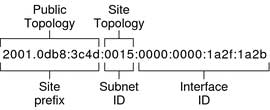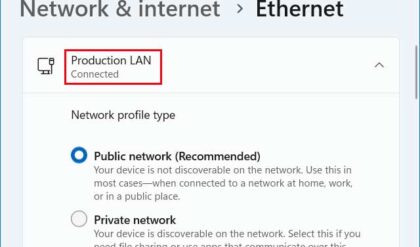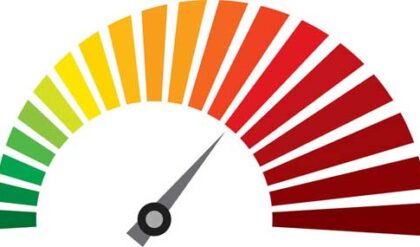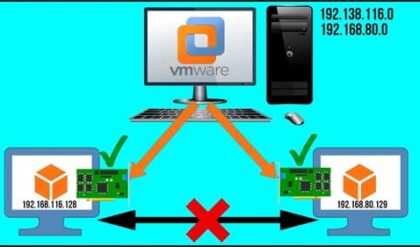IPv4, the Internet Protocol that was chosen to be used as the backbone for the internet, is in the process of being phased out in favour of its successor known as IPv6. While IPv4 is still the most used Internet Protocol around the world, IPv6 is quickly gaining ground as more companies embrace the newer and the more developed sixth revision Internet Protocol. This article will provide a background on some of the problems associated with IPv4, information about the current status of IPv4 allocation as well as an update on the steps large internet companies such as Google are taking to ensure a smooth switchover to the new protocol.
The issues with IPv4
Every Internet connected device throughout the world, whether it is a computer, a router, a smart phone, a tablet or a gaming device, is assigned an IP address when it makes a connection with the Internet. The IP address allows the device to be accessed and identified throughout the Internet allowing for data to be sent to it.
When browsing websites, for example, the servers hosting the website will identify the IP address of the Internet connected device accessing the website and will send data related to the website to that specific IP address.
Usually the IP is assigned based on the internet provider and the device used to make the connection, however with the growth of devices increasing at a rapid rate the number of standard IP addresses are looking sparse.
IPv4 uses 32 bit addressing, which limits the numbers of IP address available to around 4.2 billion IP addresses (more specifically, IPv4 allows for 4,294,967,296 IP addresses to be assigned). Initially, when the Internet was in its infancy, this wasn’t a problem. There were few Internet connected devices and the notion that the numbers of available IP addresses could be exhausted was laughable.
Over time, however, the problem of IP address exhaustion started to rear its head due to the unexpected popularity of the Internet. Soon, hundreds of millions of devices were connecting to the Internet and the IANA (responsible for the divvying up of IP addresses) noticed that they may soon exhaust the numbers of IP addresses for public use.
To address this issue, a new Internet Protocol revision was created. It is known as IPv6.
IPv6 uses 128bit addressing in place of the 32bit addressing used as part of IPv4. This change increases the numbers available IP addresses from 4.2 billion to 3.4×1038, an amount that is unlikely to ever be exhausted.

Unfortunately, since IPv6 uses hexadecimal numbering in place of the binary numbering used in IPv4, the two protocols are incompatible with each other, which has complicated the migration over to the newer protocol.
The status of IPv4 allocation and migration to IPv6
The IANA hands out blocks of IP addresses to one of five ‘Regional Internet registries’, or RIRs for short. Each RIR is responsible for handing out IP addresses for their particular region of the world.
- AfriNIC : Africa
- ARIN : North America, parts of the Caribbean and Antarctica
- APNIC : Asia, Australia, New Zealand and other neighboring Australasian countries
- LACNIC : Latin America and parts of the Caribbean
- RIPE NCC : Europe, the Middle East, Russia and Central Asia
APNIC was the first RIR to run out addressable IP addresses, mainly due to the massive growth of the Internet in countries such as India and China.
RIPE NCC were the second RIR to exhaust the numbers of available IP addresses on the 14th September 2012.
It is expected that the remaining three RIRs will exhaust the numbers of IP addresses available to them sometime within the next few years.
The potential symptoms of IPv4 exhaustion are massive and far reaching – once the numbers of available IP addresses are exhausted, no additional Internet connected devices will be able to access the Internet.
World IPv6 Launch Day
While IPv6 has been gradually rolled out since 2008, World IPv6 Launch Day on the June 6, 2012 represented a huge milestone for the migration.
On this date, a number of prominent companies that have a large Internet presence made the switch to using IPv6.
Internet Service Providers such as AT&T, Comcast and Time Warner Cable participated, as did the two networking giants of Cisco and D-Link. Facebook, Google, Bing and Yahoo also made the switch, as did Akamai and Limelight, two of the most used content delivery networks throughout the world.
Following the lead of these Internet giants, many other Internet based companies have started to make the switch to IPv6.
Conclusion
With the steady migration to IPv6, the problems of IP address exhaustion with the older IPv4 protocol will soon be behind us. Ever since World IPv6 Launch Day proved that the IPv6 protocol works well in practise without any significant issues, the numbers of vendors using the IPv6 protocol worldwide has increased on a daily basis. Due to the use of 128 bit addressing, the newer IPv6 protocol should allow for more than enough IP addresses to be assigned such that the problem of IP address exhaustion should, in theory, never rear its head again.
Sources
[1] – http://www.ripe.net/internet-coordination/ipv4-exhaustion/faq
[2] – http://www.internetsociety.org/deploy360/blog/2012/01/world-ipv6-launch-on-june-6-2012-to-bring-permanent-ipv6-deployment/
[3] – http://www.ripe.net/internet-coordination/news/ripe-ncc-begins-to-allocate-ipv4-address-space-from-the-last-8
[4] – http://www.worldipv6launch.org/
[5] – http://en.wikipedia.org/wiki/IPv4, http://en.wikipedia.org/wiki/IPv6, http://en.wikipedia.org/wiki/Regional_Internet_registry, http://en.wikipedia.org/wiki/IPv4_address_exhaustion
Written by Stuart Chalmers. ElasticHosts – cloud hosting provider and keen supporter of the IPv6 migration! All ElasticHosts servers are prepped and ready to accept IPv6 and currently support IPv4.






